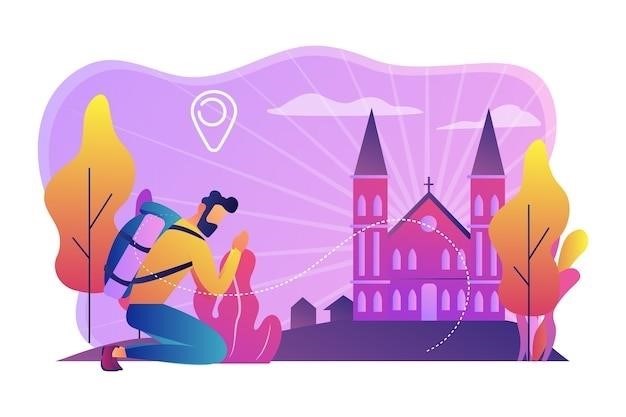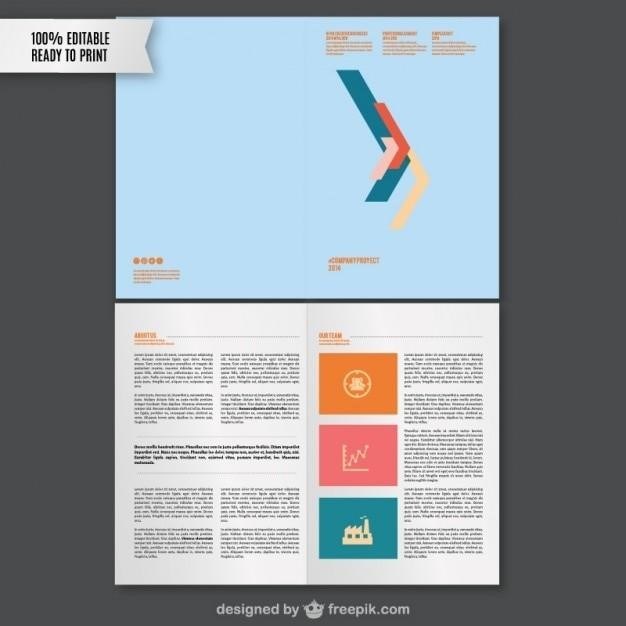Self-Guided Painted Churches Tour Map⁚ Planning Your Romanian Adventure
Embark on a self-guided journey through Romania’s painted monasteries․ Discover Bucovina’s vibrant frescoes, explore essential monasteries like Voronet and Moldovita, and craft your unique itinerary․ Utilize detailed maps and resources for a memorable cultural experience․
Choosing Your Route⁚ Bucovina’s Painted Monasteries
Bucovina, nestled in northeastern Romania, boasts a remarkable concentration of painted monasteries, each a testament to Byzantine artistry and spiritual significance․ Planning your route requires considering the geographical distribution of these treasures․ The region’s charming towns and villages offer opportunities for exploration beyond the monasteries themselves, adding depth to your cultural immersion․ A well-planned route ensures you efficiently visit the key sites while maximizing your time and minimizing travel stress․ Consider factors such as driving distances, road conditions, and the opening hours of each monastery․ Prioritize the monasteries you’re most eager to see, remembering that some may require more travel time than others․ A flexible itinerary allows for spontaneous detours and unexpected discoveries․ Remember to factor in time for leisurely exploration and reflection within each monastery’s serene atmosphere․ Researching the history and artistic styles of each monastery beforehand will enhance your appreciation and understanding of the unique character of each site․ Your journey through Bucovina promises a rich tapestry of art, history, and spiritual reflection․ A well-structured route is essential to making the most of this unforgettable experience․
Essential Monasteries⁚ Voronet, Moldovita, Humor, Sucevita
No exploration of Bucovina’s painted monasteries is complete without visiting these four iconic sites; Voronet Monastery, often dubbed the “Sistine Chapel of the East,” captivates with its intensely vivid blue exterior frescoes and powerful Last Judgment scene․ Moldovita Monastery, with its imposing fortress walls, showcases a wealth of frescoes depicting historical events like the Siege of Constantinople․ Humor Monastery, smaller and more intimate, is renowned for its reddish-brown hues and the captivating “Return of the Prodigal Son” fresco․ Finally, Sucevita Monastery, one of the last to be painted, boasts exceptionally well-preserved frescoes, including scenes from the Ladder to Paradise and the life of Moses․ Each monastery offers a unique artistic and historical perspective, reflecting the evolution of painting styles and the region’s rich past․ Plan your visits strategically, considering their proximity and accessibility․ Allow ample time at each location to fully appreciate the artistry and detail of the frescoes, taking in the serene atmosphere and reflecting on the spiritual significance of these remarkable sites․ Remember to respect the sanctity of these places of worship․
Transportation Options⁚ Driving, Guided Tours, Public Transport
Choosing the right transportation method is crucial for a smooth self-guided tour․ Renting a car offers the greatest flexibility, allowing you to explore at your own pace and reach even the most remote monasteries․ However, driving in rural Romania can be challenging, especially on smaller roads․ Consider your comfort level and driving experience before opting for this option․ Organized guided tours provide a convenient alternative, relieving you of logistical concerns and offering expert insights from experienced guides․ These tours typically include transportation, accommodation, and entrance fees, making them a hassle-free choice․ Public transportation, while budget-friendly, may require more planning and time․ Buses connect major towns and cities, but reaching some smaller monasteries might involve longer journeys and transfers․ Factor in travel times when planning your itinerary, and if using public transport, check schedules carefully to avoid disruptions․ Your choice will depend on your budget, time constraints, and personal preference for independence versus convenience․ Thorough research and planning are key to making the most of your chosen mode of transport․
Accommodation⁚ Hotels, Guesthouses, Monastic Accommodation
Securing suitable accommodation is vital for a comfortable and enjoyable trip․ A range of options caters to diverse preferences and budgets․ Hotels in larger towns like Suceava offer modern amenities and convenient locations, providing a comfortable base for exploring nearby monasteries․ For a more immersive experience, consider guesthouses in smaller villages․ These often offer a more personal touch, with opportunities to interact with locals and experience traditional Romanian hospitality․ Guesthouses frequently provide a charming, home-like atmosphere and may offer insights into the local culture․ A unique possibility is staying in monastic accommodation, if available․ This option provides a spiritual and peaceful environment, offering a closer connection to the religious heritage of the region․ However, monastic lodgings may have limited availability and simpler amenities than hotels or guesthouses․ When making reservations, confirm availability well in advance, especially during peak tourist seasons․ Check reviews and compare prices to find the best option that suits your needs and travel style․ Remember to consider proximity to your planned routes when choosing your accommodation․

Practical Information⁚ Entrance Fees, Photography Rules, Opening Hours
Before embarking on your self-guided tour, gather essential practical information to ensure a smooth and respectful experience․ Entrance fees vary slightly between monasteries; it’s advisable to check current pricing online or at local tourist information centers․ Generally, expect modest fees, but having local currency on hand is recommended․ Photography rules are crucial to respect․ While exterior shots are usually permitted, interior photography might be restricted or prohibited in some churches․ Always check signage or inquire politely before taking pictures inside․ Opening hours for monasteries can differ, often influenced by services and seasonal factors․ It’s best to verify opening times beforehand, perhaps via the monastery’s official website or local tourism resources․ Planning your visits accordingly prevents disappointment and ensures you have ample time for exploration․ Respect for religious sites is paramount․ Dress modestly, speak quietly, and avoid disruptive behavior․ Remember that these monasteries are active places of worship and should be treated with appropriate reverence․ Planning ahead and adhering to these guidelines guarantees a respectful and rewarding experience of Romania’s painted churches․
Exploring Beyond the Monasteries⁚ Local Culture and Cuisine
While the painted monasteries are the focal point, Bucovina offers a rich tapestry of local culture and cuisine beyond the religious sites․ Immerse yourself in the region’s unique traditions by visiting local villages and interacting with friendly inhabitants․ Observe traditional crafts, perhaps witnessing wood carving or pottery demonstrations, gaining insights into the region’s artistic heritage․ Sample the authentic flavors of Bucovina’s cuisine․ Indulge in hearty dishes featuring locally sourced ingredients, savoring the distinct regional specialties․ Many restaurants offer traditional Romanian fare, showcasing dishes passed down through generations․ Don’t miss the opportunity to sample local wines or spirits, complementing your culinary journey․ Engage with the local community respectfully, appreciating their customs and traditions․ A visit to a local market can provide further cultural immersion, observing everyday life and interacting with friendly vendors․ Beyond the grand architecture of the monasteries, Bucovina’s cultural richness and gastronomic delights promise a truly immersive and enriching travel experience․ Exploring these aspects complements your exploration of the painted churches, offering a holistic understanding of the region’s heritage․
Creating Your Itinerary⁚ A Sample Self-Guided Tour
A suggested self-guided tour could begin in Suceava, a convenient base for exploring the region․ Dedicate a full day to Voronet Monastery, marveling at its iconic blue frescoes and learning about its historical significance․ The next day, journey to Moldovita Monastery, appreciating its unique architectural features and the detailed frescoes depicting historical events․ Allow ample time at each site to fully appreciate the artwork and atmosphere․ Consider incorporating a visit to Humor Monastery, known for its smaller scale and distinct reddish-brown hues, on the same day or as a separate excursion․ For those with more time, a visit to Sucevita Monastery, the last to be painted in the Bucovina style, is highly recommended․ Remember to factor in travel time between monasteries, utilizing local transport or rental cars as preferred․ Plan your visits around the monasteries’ opening hours and be mindful of potential crowds, especially during peak tourist seasons․ Pre-booking accommodation in Suceava or nearby towns ensures a comfortable stay and allows for relaxation after a day of exploring․ This sample itinerary can be adjusted based on personal interests and the available time, offering a flexible framework for your self-guided adventure through Bucovina’s stunning painted monasteries․
Detailed Maps and Resources⁚ Online and Offline Options

Planning a successful self-guided tour of Romania’s painted monasteries requires access to reliable maps and resources․ Online platforms such as Google Maps provide a general overview of the region, showing the locations of the monasteries and nearby towns․ However, for detailed information and offline access, consider downloading specialized maps․ Many map applications allow for offline downloads, ensuring navigation even without internet connectivity in remote areas of Bucovina․ Supplement digital maps with printed materials․ Tourist brochures or guidebooks often contain detailed maps highlighting the monasteries, along with historical information and practical details․ Websites dedicated to Romanian tourism provide valuable information, including opening hours, entrance fees, and photography guidelines for each monastery․ Several websites offer virtual tours of the monasteries, providing a preview of the artwork and allowing you to familiarize yourself with the sites before your visit․ For in-depth historical context, consider consulting academic publications or online resources specializing in Byzantine art and Romanian history․ These resources, combined with your chosen map, will ensure a comprehensive and enriching experience during your self-guided exploration of Bucovina’s artistic and historical treasures․
Respectful Travel⁚ Cultural Sensitivity and Etiquette
When exploring Romania’s painted monasteries, remember these are not just tourist attractions; they are active places of worship and pilgrimage sites․ Respectful behavior is crucial․ Dress modestly when visiting; avoid revealing clothing․ Silence your phone and refrain from loud conversations, especially inside the churches․ Photography is often restricted inside the monasteries; check signage or ask for permission before taking pictures․ Be mindful of local customs․ Learn a few basic Romanian phrases to show your appreciation for the local culture․ Entering a monastery requires a degree of reverence․ Observe the behavior of others and follow their lead․ Many monasteries have nuns residing within their walls, treat them with the utmost respect and dignity․ Avoid disruptive behavior and maintain a respectful distance from religious ceremonies or private areas․ Before entering any church, take time to observe those around you, notice their behavior, and emulate their level of reverence․ Remember to be considerate of both the religious significance of the monasteries and the daily lives of the people who live and work there․ By exhibiting respectful behavior, you contribute to a positive experience for yourself and the local community, ensuring the preservation of these invaluable cultural treasures․



0 Comments